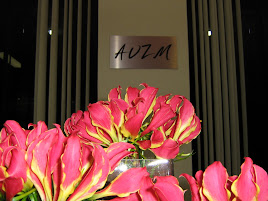div style="width:425px" id="__ss_813521">Earthquake Vocabulary
View more presentations from tscheuch.
Earthquake Vocabulary
Crust - the top layer of the earth, which consists of solid rock. Both the continental crust (land masses) and oceanic crust (the land beneath the ocean) belong to the crust.
Epicenter - the point directly above the focus or source of the earthquake.
Fault - a break or separation in rock, usually between two or more tectonic plates.
Focus - the source of the earthquake inside the earth, where the rock first begins to break.
Intensity- the amount of shaking and type of damage at a particular location. Intensity can be greater or weaker depending on the distance from the epicenter.
Liquefaction - this happens when loose, moist soil or sand is shaken so hard that individual grains separate, turning the earth into a soft, fluid slurry that can swallow entire buildings.
Lithosphere - the uppermost layer of the earth, which consists of all solid rock. It includes both the crust and the upper mantle.
Magnitude - the amount of energy released from the earthquake. The size of the seismic waves at the epicenter, which can be determined by the size of the wavy lines on the seismogram.
Mantle - the layer beneath the crust. The upper mantle is solid rock; the lower mantle is molten rock.
Mercalli Scale - a subjective measure of the strength of an earthquake. It measures the degree of intensity.
Richter Scale - an objective measure of the strength of an earthquake. It measures the degree of magnitude.
Seismic Waves - vibrations that move through the earth in a way similar to waves moving in water. They can travel through solids and liquids.
Seismogram - written recording of the earth's vibrations, produced by a seismograph.
Seismograph - instrument that plots the intensity of earthquake waves on a roll of specially marked graph paper.
Seismologist - scientist who studies earthquakes.
Tectonic Plates - individual sections of the lithosphere of the earth. They fit together in a way similar to a jigsaw puzzle, but are always moving very slowly, floating on the molten rock of the lower mantle.
Here is more Earth science vocabulary list of key terms for learning about earthquakes.
Aftershock- a smaller earthquake that occurs after a larger earthquake
Earthquake- movement of the ground caused by the release of energy from a sudden shift of rocks in Earth's crust.
Epicenter- the point on Earth's surface directly above the focus of an earthquake
Fault- a break in Earth's crust where movement of rock occurs
Focus- the point below Earth's surface where movement of rock produces an earthquake
Foreshock- a small earthquake that precedes a larger earthquake
Magnitude- the measurement of the total strength or amount of energy released by an earthquake
Mercalli scale- a measurement of an earthquake's intensity based on how much damage it causes. The Mercalli scale ranges from Level I (not felt except by very few under favorable conditions) to Level XII, (causing almost total destruction.)
Moment magnitude scale- a measurement of an earthquake's magnitude based on the amount of movement of the rock along a fault line.
Normal fault- a type of fault where forces of tension are pulling rock apart.
P (Primary) wave- the fastest moving type of seismic wave, which expands and compresses rock, like the movement of a slinky. Also known as pressure waves. P waves can travel through both liquids and solids.
Reverse fault- a type of fault where compression pushes rock together. Also known as a thrust fault.
Richter scale- a measurement of the magnitude of an earthquake based on the readings of a seismograph. The Richter scale is a logarithmic scale ranging from 0 to 9, with each number representing a 10-fold increase in ground motion, and a 30-fold increase in energy released.
S (Secondary) wave- the second-fastest moving type of seismic wave, which moves rock horizontally from side to side. Also known as shear waves. S waves cannot pass through liquids, and therefore cannot pass through Earth's liquid outer core.
Seismic wave- a vibration that travels through Earth carrying the energy released during an earthquake.
Seismograph- an instrument that records seismic waves.
Strike-slip fault- a type of fault where rocks slide horizontally past each other in opposite directions, with little up or down motion. The San Andreas fault in California and the North Anatolian fault in Turkey are examples of strike-slip faults.
Surface waves- seismic waves that move along Earth's surface. They can have an up-and-down motion or a horizontal motion. Surface waves travel slower than P or S waves and usually cause the most damage.
Tsunami- a giant, fast-moving wave that is caused by an undersea earthquake. Also known as a seismic sea wave.
Read more: http://www.brighthub.com/education/k-12/articles/53594.aspx#ixzz0gqZCwpxU






